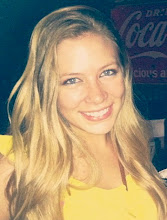Chapter 10: Nonfiction: Biographies and Informational Books
Non-fiction books are considered to be "literature of fact". These books incorporate information and biographies that are based on truth and fact. I can only imagine many students find stories like these boring, so it is important for the books to have an intriguing quality and "enchant" the students. But, these books are very beneficial to students because they give them insight to the real social and scientific world as well as providing interesting and factual matter that will help them succeed in the future. Actually, it is very surprising to me that students generally prefer non-fiction books, especially boys. For teachers, it is important to select interesting and quality non-fiction books. The topic should have been well researched by the author to provide the most accurate information. The last thing you want is for your students to be reading false information about Abraham Lincoln or Benjamin Franklin! There are also books that use fiction to portray and non-fiction topic such as a war.
Biographies are another way for a book to intrigue and explore a factual topic. I think biographies are a great way for students to see the progression of real life, how people can overcome challenges, and how people reach their goals and dreams. It is also crucial to evaluate a biography before presenting it to your students. Some elements for evaluating a biography are: setting, plot, characters, style, theme, and accuracy.
Informational books that teach students facts come in a variety of topics ranging from language to science to philosophy. Evaluating these books is also important to determine whether they are good enough for your students to learn by. The elements to evaluate them are: organization, style, design/illustrations, and accuracy. Just like biographies, your students should be gaining accurate information that they can build on in their academic future.
I like that the book suggests that you do not need to read the whole book to the students, but perhaps a chapter. So, if your class is studying a period of time while John F. Kennedy was President, only his 2 years of presidency really needs to be read. A brief overview of his past would be enough, rather than reading all the chapters before he was elected.
Having students make a connection to a subject they are learning with a non-fiction book they are reading is a great way for them to further understand the subject. For example, if the class is learning about the solar system, a book they choose about the solar system with pictures and interesting facts may be a great addition to the lesson plan. All in all, incorporating non-fiction books with real curriculum helps students to increase their reading skills while learning factual information.

